MINDING THE GAP: A Profound, Gentle Portrait Of Abuse & Survival
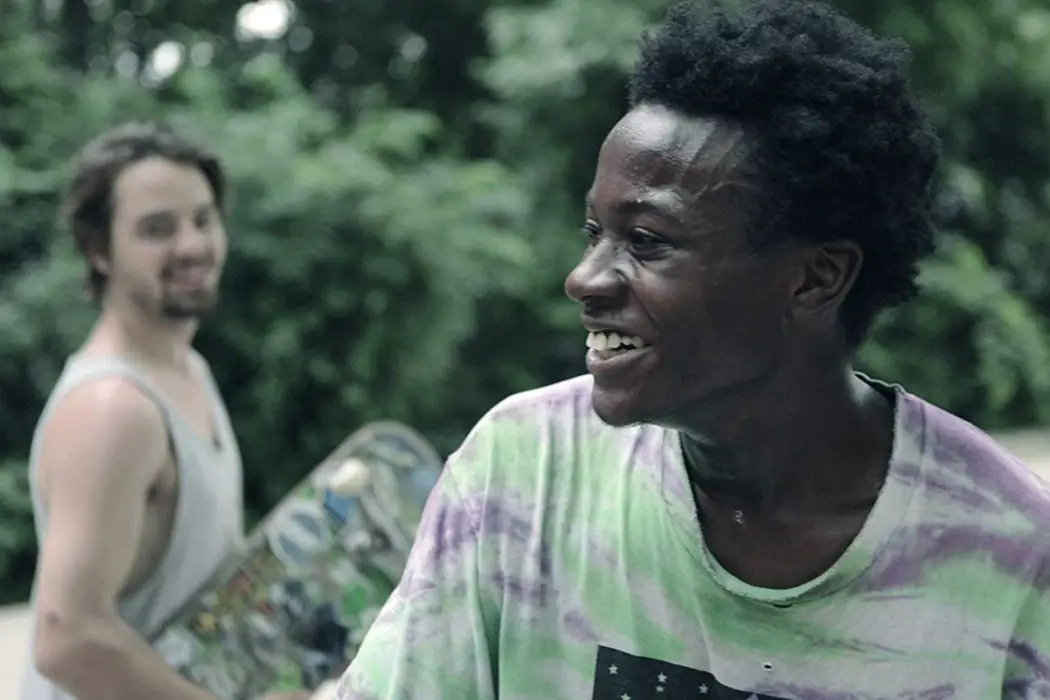
Kyle is a film geek and a film major graduate…
(Warning: spoilers) — In the last third of Minding the Gap — a documentary about friends Bing Liu, Keire Johnson, and Zack Mulligan, who all love to skateboard, but struggle with depression, violence, and more in the Rust Belt town of Rockford, Illinois — something truly spectacular happens.
Director, cinematographer, and co-editor Bing Liu sits down with Johnson and tells him that part of the reason why he’s making this film is because he sees himself in Johnson’s story, one of parental abuse and quiet, internal struggle. Johnson processes that for a moment, before smiling and stumbling over words, trying to find a response. “Wow, that’s… wow, Bing. I had no idea, dude. That’s… that’s really cool, though. Wow.” We can see how much that means to Johnson, shared trauma coming together to create powerful art.
Domestic Violence And Intergenerational Cycles
In truth, Minding the Gap has a few other main characters: Nina, Mulligan’s on-and-off girlfriend and person with whom he shares a child, and Mengyue, Liu’s mother. That’s because the film is principally about physical and emotional domestic violence of many forms — that inflicted on wives or girlfriends and that inflicted on children.
We come to understand that Liu has experienced violence from his late stepfather, rendering Liu ever present even when he’s not on screen. But it also renders his gentle touch on the film even more impactful, as Minding the Gap is not necessarily defined only by his own experience. Rather, Liu expands the film’s scope to dig into the past of others and ask about the future or, in other words, understand both the lasting effect of violence and the intergenerational cycles of it.
Truly Masterful Editing
Small moments are offered the weight of time beyond the minutes that we see. And much of that weight specifically comes from editors Liu and Joshua Altman. We transition from stories of fathers to struggles of sons, but what’s even more powerful than that linear impact is how the film juxtaposes abusers and the abused.
Toward the end of the film, as Liu talks with Mulligan about his relationship with Nina and the violent nature it has taken, with Mulligan momentarily attempting to excuse some of his abuse, the film cuts from a shot of Mulligan to an almost reverse shot of Liu — except that it jumps time and space to when Liu is interviewing his mother, who was abused by Liu’s stepfather.
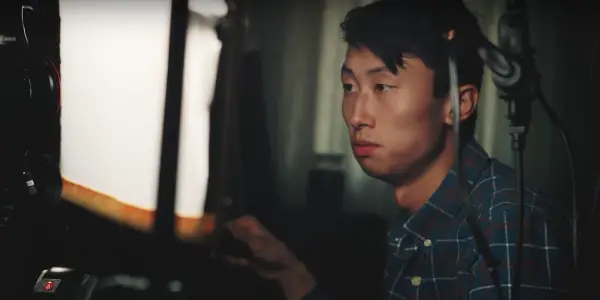
The cut is staggering, arresting, and breathtaking. It feels impossible to describe its power, other than to say that that cut is what film as an art form aspires to do.
Yet, Minding the Gap has more cuts like it. Skateboarding is immediately established as a mode of hard work, creative expression, and escape, as a passion where skateboarders support each other’s efforts no matter what. Even with that, some might see the other parts of the film as more prevalent than skateboarding, but Liu certainly connects skateboarding to both the trauma and the recovery from it.
In the edit, Liu and Altman move from Johnson expressing how happy he is to be working and able to financially support his mother to Johnson skateboarding. They move from Johnson confronting immense pain in front of his father’s grave to Johnson skateboarding. The succession of sequences are no accident. The meaning that skateboarding is offered is grand.
Bringing The Best Out Of The Documentary Form
Beyond masterful editing, though, what Minding the Gap does within the documentary medium feels astounding.
The medium can be difficult to digest. Plenty can go on off camera that influences what we see on camera. “Reality” is never truly captured, not even with a fly-on-the-wall approach. The camera is its own subject, even when it tries to be invisible.
For documentary filmmakers, it’s often about how much of their voice they allow through, especially when they directly engage with their subjects. With Minding the Gap, Liu deftly balances direct engagement, simple acknowledgment of the camera, and complete restraint.
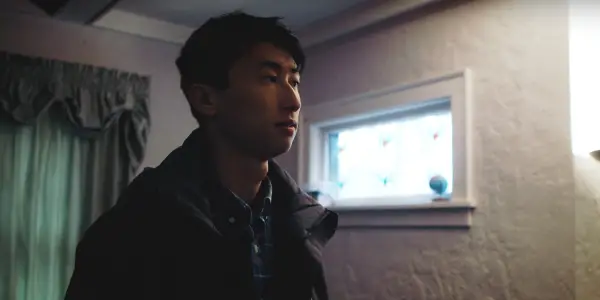
And refreshingly, he even allows for the film to challenge its own form, including an interaction with Mulligan, where Mulligan asks Liu what kind of filming they’re doing that day — “the kind where I pretend you’re not there” or the kind “where we talk the whole time.”
The approach has a strange effect. Occasionally, it feels rather uncomfortable for the camera to be where it is, specifically during moments of both verbal abuse and incredible pain. In those instances, the camera, even though it’s acting as if invisible, is nothing but.
But it’s never to the detriment of the film. These are friends, but these are friends who are actively engaging with one another beyond simply being filmed, because being filmed has offered them an outlet unlike anything they’ve ever had. Just before Liu tells Johnson why he’s making this film, Johnson says that filming has been like “free therapy.”
Cinema, The Empathy Machine
In that, there’s a profound sort of reflexivity to the film. The subjects of Minding the Gap are the people who need the film itself the most, in addition to being the only people who could’ve created this piece of art in the first place. That’s why that moment with Liu and Johnson is so powerful. Film can offer a reflection of one’s self, but sometimes, that potential for reflection is denied as certain people aren’t represented.
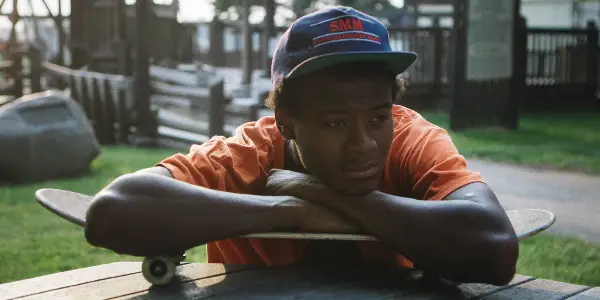
That fact lends a quality to Minding the Gap that few other films have; this is not just a moving story, but an essential one. Johnson’s reaction to Liu is of the power of seeing himself reflected in someone else, and the power of someone else seeing a reflection of themself in him. And Liu‘s agency is stirring, as he creates a reflection of himself through someone else with his own art. The events that we see are distinctly of the documentary, but they also feel necessary beyond the boundaries of the film as well.
I See Myself
I contemplated leaving this section out, not acknowledging myself, but in the process of shaping this review, it became clear that the only extension of discussing reflexivity and reflection in Minding the Gap was to discuss the reflection I saw of myself.
I used to skateboard, and watching Minding the Gap was surreal. I know how hard some of the tricks they were doing are. (The physics of it are mind-boggling.) I know, all too well, the intense pain behind their grimacing faces after those nasty falls, and the unbearable frustration of their boards snapping beneath their feet. And I know their indescribable elation after finally landing that trick.
I know kids I skateboarded with who came from broken homes. I know that skateboarding saved some of their lives, or at least helped them escape their struggles. I know that skateboarding helped me escape mine.
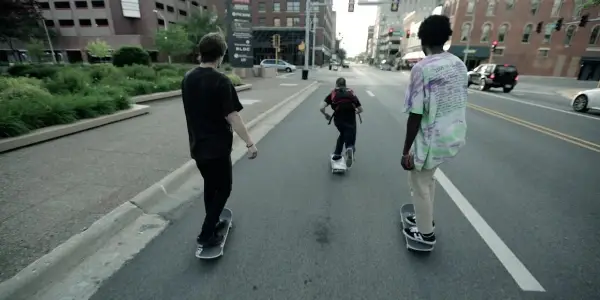
I know what it’s like to film skateboarding, and can attest to how extremely difficult it is to become as ridiculously good at filming skateboarding as Liu is. Seriously, that is some gorgeous and supremely impressive cinematography. I also know what it’s like to sit front of editing software with hours of raw skate footage ready to be compiled.
It was a part of my life that I only got to share with a few others. And we never really discussed what skateboarding really meant to us. So, to sit down and watch a film, directed by a skateboarder, about skateboarding and how much skateboarding means to someone struggling was, to repeat, surreal.
To see an Asian-American skateboarder on screen, making his own film, was… profound.
Minding the Gap: Conclusion
Minding the Gap is a harrowing portrait of trauma and abuse, and a hypnotic rumination on what it means to film, be filmed, and see yourself in film. And its ending is momentous.
And skateboarding is inherently connected to all of that. A car may drive off at the end, but it does with a skateboard in its trunk.
Minding the Gap is distinctly a skateboard film. To call it “more than” such or “not just” one would be to miss so much of the power that the film holds. These young men are skateboarders. That’s how they’ve survived, and that’s how they’ll continue to.
What did you think of Minding the Gap? Did you see yourself in any of the subjects? Share your thoughts in the comments below.
Minding the Gap was released in the U.S. in theaters and on Hulu on August 17. For all international release dates, see here.
Does content like this matter to you?
Become a Member and support film journalism. Unlock access to all of Film Inquiry`s great articles. Join a community of like-minded readers who are passionate about cinema - get access to our private members Network, give back to independent filmmakers, and more.
Kyle is a film geek and a film major graduate from UC Berkeley. Aside from obsessively monitoring the awards season or watching a Christopher Nolan film for the twentieth time, he loves screenwriting and the Los Angeles Dodgers.













